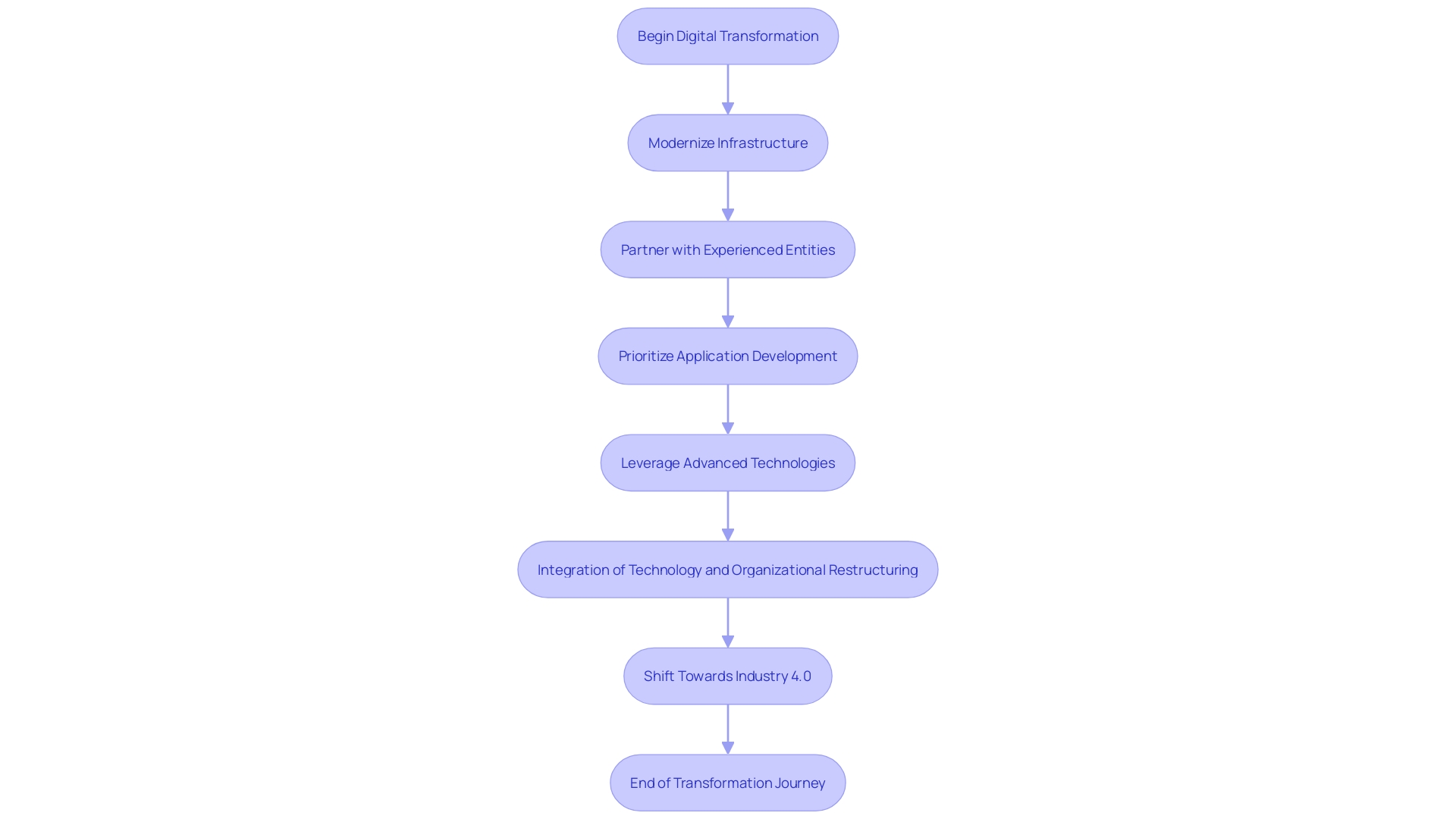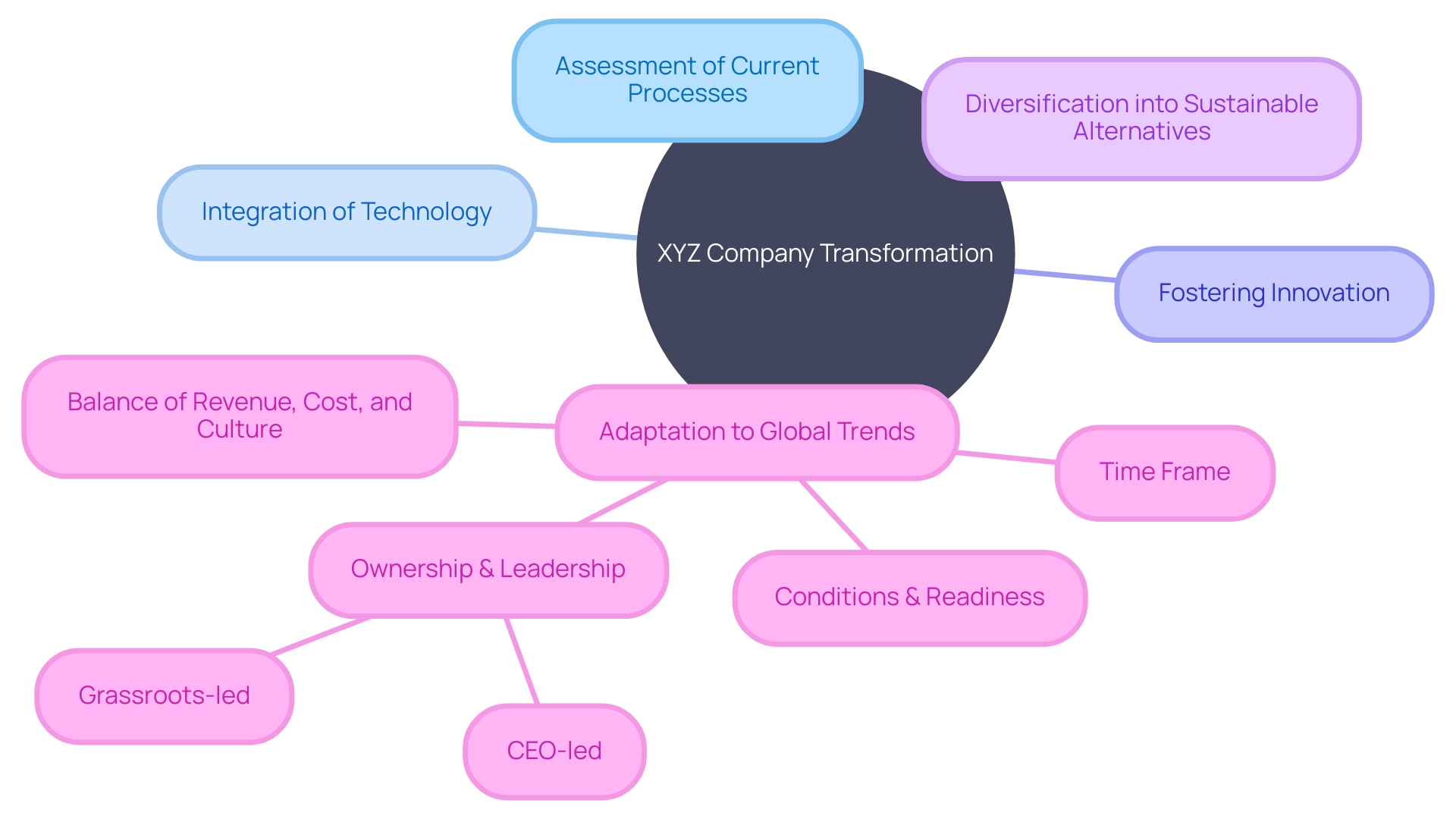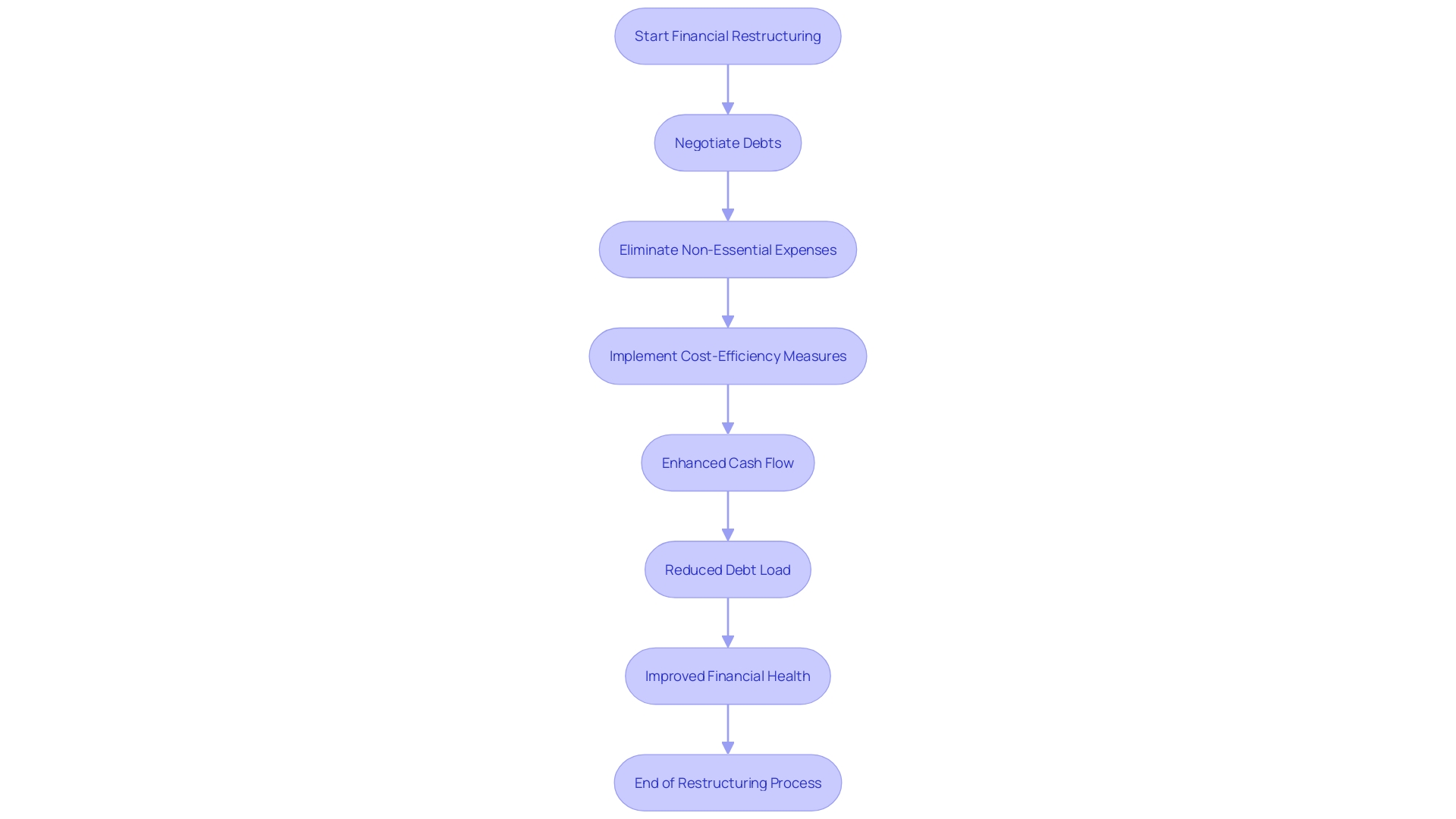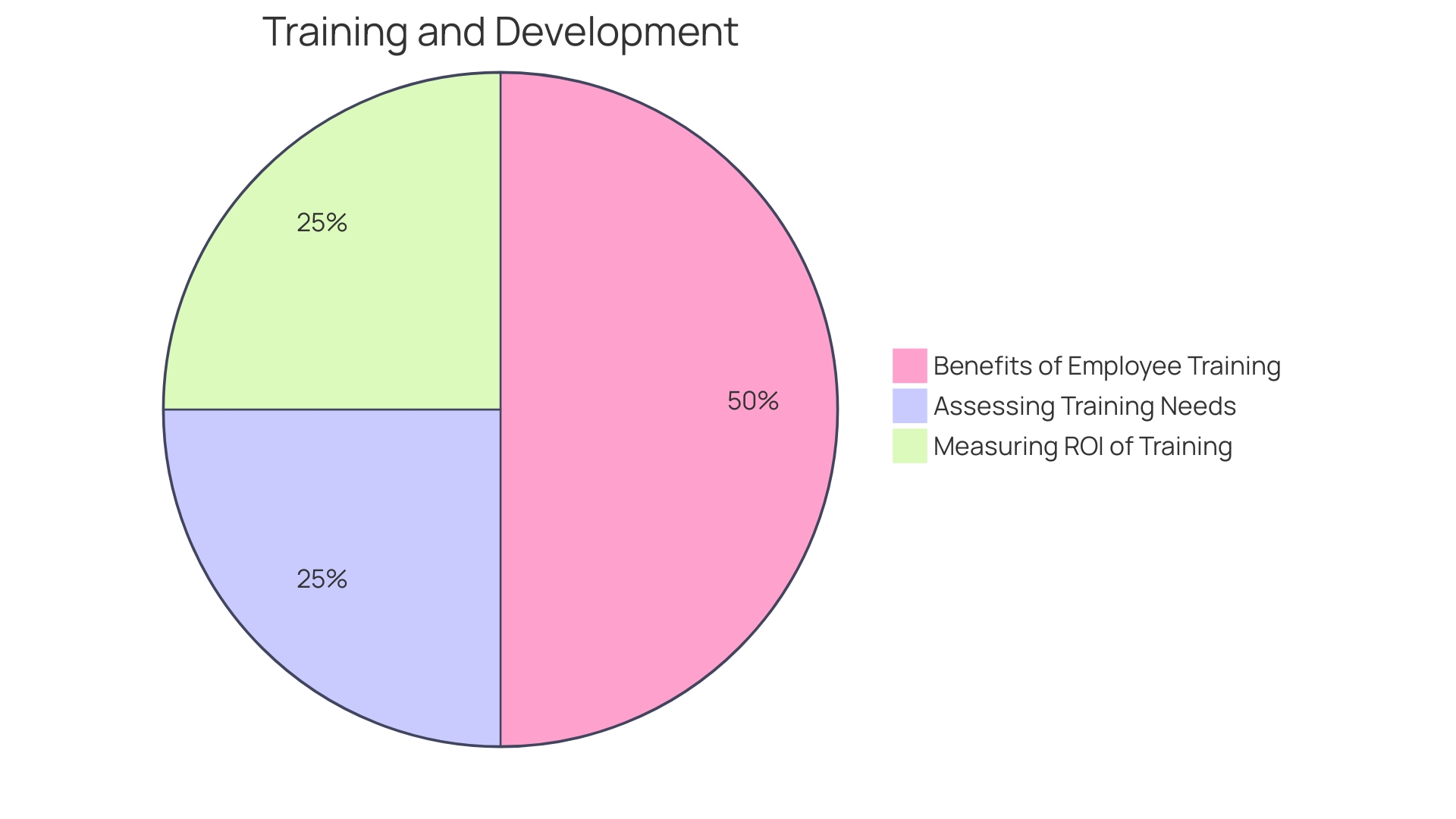Introduction
The revitalization of XYZ Company, a once beleaguered manufacturing firm, serves as a testament to the transformative power of strategic restructuring and effective management. In the face of declining sales, mounting debts, and low morale, the company embarked on a journey of reinvention. This article explores the key challenges faced by XYZ Company, the implementation of turnaround strategies, the role of leadership, financial restructuring measures, employee engagement initiatives, and the results and benefits of the turnaround.
By examining the lessons learned and best practices from XYZ Company and other successful businesses, we gain valuable insights into the importance of innovation, strategic agility, and the willingness to embrace change for revitalization. Join us on this inspiring journey as we delve into the world of business transformation and discover the path to success.
Case Study: XYZ Company
The revitalization of XYZ, once a beleaguered manufacturing firm, is a testament to the transformative power of strategic restructuring and effective management. Faced with a downward spiral of sales, escalating debts, and a workforce plagued by low morale, the company embarked on a journey of reinvention. The key to their successful turnaround was not just in adopting new strategies, but in fostering a culture of innovation and embracing technology leadership, akin to the ethos of Guide Engineering. By integrating high-end automation and test equipment, XYZ was able to not only stabilize but also grow its market share, both domestically and internationally.
To keep pace with industry evolution, XYZ Company took heed of the manufacturing sector's trends, economic indicators, and unique challenges, aligning their strategic objectives with the benefits of an upgraded ERP system. This shift was crucial to manage supply chain disruptions, reduce operational costs, and bolster productivity, ultimately enhancing decision-making processes.
Overcoming the inherent resistance to change, the company presented a compelling case to its leadership, underlining the potential ROI and operational enhancements that the new ERP system promised. This approach echoes the sentiments of Esther Kestenbaum Prozan, who advocates for a mindset shift in small and medium-sized businesses, emphasizing that sustainable growth is attainable with lean resources.
The narrative of XYZ is further supported by the broader manufacturing context, where U.S. manufacturing is experiencing a renaissance, spurred by government subsidies despite facing its longest slump in two decades. The move towards smart factory solutions is becoming increasingly critical as 83% of manufacturers acknowledge that such advancements will redefine product manufacturing within the next five years.
In a similar vein, Last Arrow Manufacturing’s commitment to precision and quality control in metal fabrication, with a keen focus on cost-effective services, reflects the principles that guided XYZ in its successful turnaround. This case study serves as an inspiring blueprint for other organizations navigating the complex waters of business transformation, highlighting the importance of innovation, strategic alignment, and the willingness to embrace change for revitalization.
Key Challenges Faced by XYZ Company
As XYZ faced the tumultuous landscape of the industry, they were hindered by antiquated technology and processes that stifled innovation. The fierce market competition only intensified their financial struggles, demanding a strategic overhaul. Inspired by the dynamic approaches adopted by industry peers, XYZ Company recognized the necessity of a collaborative, multiprovider strategy. Taking cues from successful transitions like those managed by Rackspace Technology for IFCO, they realized the importance of partnering with experienced entities that could guide them through the complexities of modernization. Security considerations were paramount, as was the creation of a centralized knowledge resource akin to a Wikipedia-style playbook. This enabled a democratization of information and a more efficient application prioritization, aligning with organizational needs. The objective was clear - to transform the outdated infrastructure into a flexible, agile framework capable of withstanding the ever-evolving demands of the digital era. Such a transformation was underpinned by the broader shift towards Industry 4.0, leveraging advanced technologies to optimize operational efficiency, drive cost savings, and enhance customer satisfaction. With a focus on prudently chosen metrics, the organization embarked on modernizing legacy systems, a move underscored by a larger trend of technological integration and organizational restructuring necessary for realizing the full potential of the Fourth Industrial Revolution.

Implementation of Turnaround Strategies
Confronted with a challenging economic climate, XYZ Company embarked on a comprehensive operational overhaul. This initiative began with a meticulous assessment of their current processes, pinpointing opportunities for optimization. The company prioritized enhancing their production workflow, committing to the integration of cutting-edge technology, and cultivating an ethos of innovation among their team members. These strategic moves were reminiscent of Stora Enso's bold transformation. Once a major player in the paper industry, Stora Enso reinvented itself as a leader in renewable materials amid the decline in paper demand. The Finnish enterprise, with a storied history dating back to 1288, embraced market shifts by diversifying into sustainable alternatives for plastic products and eco-friendly construction materials. They demonstrated that proactive adaptation to global trends, such as the burgeoning demand for renewable resources, is essential.
The requirement for alteration in organizations is frequently motivated by external pressures and internal aspirations. Market competition and the pursuit of growth opportunities prompted 51% of businesses surveyed by principal analyst Bryan Solis to initiate change. Advancements in technology act as a catalyst, with the digital transformation market expected to reach a staggering $1,009.8 billion by 2025. High-quality change management practices are critical, given that approximately 66% of change initiatives fail. In this context, XYZ Corporation's strategic refocusing aligns with the continuous transformation paradigm advocated by Kurt Lewin's “unfreeze-change-refreeze” model, but adapted to the demands of a dynamic marketplace where transformation is an ongoing journey rather than a finite project.

Leadership's Role in the Turnaround
At XYZ Company, the leadership's dynamic approach was pivotal to the organization's revival. Embracing the mantra 'Change Equals Opportunity', the executive team, following in the footsteps of iconic leaders from 7-Eleven and Blockbuster, recognized that in transforming change into opportunity lies the essence of commercial success. With a strategic partnership similar to the one developed by Netline, the leaders disseminated a compelling vision that resonated throughout the organization's ranks. Their effective communication galvanized the workforce, fostering a collaborative environment where every employee felt empowered to drive forward the turnaround strategy.
This leadership ethos is underscored by the recent comeback of Todd Vasos as CEO of Dollar General amidst challenges. Similarly, Red Lobster's emergence from bankruptcy with a new CEO at the helm exemplifies the transformative power of leadership. In both instances, decisive leadership actions were instrumental in steering the companies back to stability and growth.
Guided by four principles and an eye for weak signals, XYZ Organization's leaders harnessed the anomalies of the market, leveraging them as indicators for strategic shifts. They recognized that in the face of uncertainty, being ruthlessly constructive and fostering a culture of creative criticism are essential for achieving Predictable Success. By leveraging human creativity and the emerging capabilities of AI, while recognizing their constraints, the leadership team at XYZ exemplified the vital role strong, well-informed, and flexible leadership plays in orchestrating a successful organizational transformation.
Financial Restructuring and Cost-cutting Measures
As part of a crucial shift in organizational strategy, XYZ Enterprise embarked on a rigorous financial restructuring process. They took decisive steps to renegotiate towering debts, identifying and eliminating non-essential expenses, and instituting robust cost-efficiency measures throughout the organization. This decisive action mirrored the approach taken by a major branded hotel that capitalized on its prime location to bolster food and beverage sales, proving that understanding and leveraging market position is paramount. Similarly, by enacting these changes, XYZ Company experienced enhanced cash flow, a significant reduction in debt load, and a return to a position of financial health.
This transformation draws parallels to Rite Aid Corporation's recent financial restructuring announcement. Rite Aid detailed a plan that would significantly reduce its debt and enhance financial flexibility, thereby supporting its ongoing organizational transformation. The company utilized a court-supervised process to systematically achieve these objectives, reflecting the meticulous planning and execution that is exemplary for enterprises in similar predicaments.
A critical factor in XYZ organization's success was the meticulous tracking, analysis, and refinement of expenditures, underscoring the axiom that knowledge wields power, especially in finance. Rigorous bookkeeping and expenditure scrutiny facilitated a clear identification of cost optimization opportunities, an approach that aligns with the practices recommended by experts for achieving long-term, sustainable savings without compromising operational efficiency or service quality.
In the broader context, the steps taken by XYZ organization resonate with the strategies employed by businesses seeking to emerge stronger post-economic disruption. Leaders who proactively realign their operational focus towards long-term objectives, judicious investments, and leveraging technology to streamline processes can redefine their trajectory in the marketplace. These businesses not only successfully navigate through challenging periods but also pave the way for shaping the following years of economic recovery.

Employee Engagement and Training Initiatives
At XYZ, improving the workforce's capabilities became a crucial strategy for achieving success. By implementing dynamic employee engagement and training programs, they sought to invigorate their team's morale and promote cohesive collaboration. The initiative was centered around upgrading the workforce's skill set and knowledge base, leading to a notable surge in productivity and cultivating an amiable work atmosphere.
In a similar vein, Nets, the Copenhagen-based digital payment solutions provider, undertook a transformative approach to employee onboarding. This innovative strategy aimed to simplify the presentation of intricate technical data, thereby encouraging self-guided discovery among users. Through creative reimagining of tables and schematics, Nets endeavored to make the information more accessible and engaging.
Indeed, the significance of fostering a well-trained, satisfied workforce cannot be overstated. As stated by Karmela Peček, Instructional Designer at eWyse Agency, companies, especially those within the financial sector, must comply with stringent international regulations. Ensuring that employees are adept in areas such as fraud protection, Know-Your-Customer, and Anti-Money Laundering is not just a regulatory necessity but a cornerstone for operational success.
Global statistics and reports echo the importance of employee contentment and its direct correlation with productivity. For instance, findings from the World Poll highlight that a significant percentage of workers experience negative emotions daily, with younger and remote full-time employees feeling particularly isolated. These emotions can be mitigated through engaging work environments, as exemplified by Viatris' initiative in Hungary. There, the integration of nature conservation within the industrial workspace has cultivated a sense of well-being among employees, showcasing the profound impact a positive work environment can have on employee sentiment.
Training programs, as advocated by industry experts, are fundamental in achieving more productive operations and maintaining a contented workforce. These programs are instrumental in retaining high-caliber employees, leveraging new technologies, and fostering a culture of continuous improvement—all of which contribute to enhanced customer service and profitability.

Results and Benefits of the Turnaround
The strategic revitalization of XYZ involved astute market analysis and customer-centric adaptations. With the hospitality industry as a backdrop, consider the example of a prominent hotel unable to spike its Food & Beverage (F&B) sales, despite a prime urban location. By focusing on leveraging this location and deeply understanding the market's demands, the hotel saw a remarkable uptick in diners and reviews, similar to XYZ's surge in sales and market share. The essence of such strategies lies in the acute awareness of evolving customer behaviors and the economic climate.
The transformation journey of XYZ Company is a testament to the effectiveness of strategic agility and customer focus. By monitoring key performance indicators (KPIs), as recommended by management expert Peter Drucker, and pivoting based on a profound understanding of market dynamics, XYZ not only enhanced its profitability but also reinforced stakeholder confidence. This echoes the sentiment that a mere 5% increase in customer retention can lead to a revenue boost of up to 95%, according to HubSpot.
Additionally, XYZ's turnaround narrative aligns with the broader trends affecting diverse industries. IBL, a conglomerate active in over 23 countries, underscores the necessity of an innovation portfolio balanced across all categories to remain competitive. This approach resonates with XYZ's strategy, which led to a more robust and flexible organizational structure, capable of withstanding market volatilities and capitalizing on emerging opportunities.
The lessons from XYZ's and similar success stories highlight the critical role of leadership in transformation. Like Xerox and Kodak demonstrate, understanding the necessity to adapt in accordance with market and technological changes is essential. XYZ's success serves as a compelling example of how proactive, customer-centric strategies can revitalize an enterprise, fostering a culture of innovation and responsiveness to change.
Lessons Learned and Best Practices
stora Enso, a venerable Finnish organization with roots stretching back to 1288, stands as a testament to the power of adaptation and reinvention. Faced with the decline in demand for paper products, this top-five global paper manufacturer saw an opportunity in the burgeoning renewable materials sector. By pivoting towards the creation of sustainable alternatives to plastic drinkware and construction materials, Stora Enso boldly embraced change, demonstrating the critical role of innovation in a successful turnaround.
The company's transformation was not simply a response to market pressures; it was a strategic reimagining of its core operations. This shift was propelled by the arrival of a new CEO and the difficult decision to reduce the workforce by over a third. These actions emphasized the significance of strong leadership and a readiness to make difficult decisions for the sustainability of the organization.
During this transition, Stora Enso's strategy to maximize cash flow from its traditional paper operations to fund investments in new, emerging markets was a stroke of strategic acumen. It emphasizes the crucial balance between managing current assets and investing in future growth—an equilibrium vital for any company navigating through turbulent times.
As we consider the continuous nature of transformation in today's dynamic business environment, Stora Enso's story resonates with key insights. The organization's evolution from a paper manufacturer to a leader in renewable materials demonstrates the need for continuous innovation and the significance of aligning with global trends. It's a narrative that echoes Peter Drucker's assertion that strength lies in an organization's ability to perform amidst disruption.
Considering such instances, it is clear that organizations must view transformation not as a limited undertaking, but as an ongoing procedure. By staying attuned to weak signals and anomalies that might herald significant shifts, businesses can position themselves to adapt and thrive. Stora Enso's successful turnaround stands as a blueprint for companies seeking to navigate the complexities of change and emerge stronger than before.
Conclusion
In conclusion, XYZ Company's successful revitalization is a testament to the transformative power of strategic restructuring and effective management. They overcame challenges such as declining sales, mounting debts, and low morale through a journey of reinvention.
Key factors in their turnaround were fostering innovation and embracing technology leadership. Integration of automation and an upgraded ERP system stabilized their market share and improved decision-making.
Leadership played a crucial role, with effective communication and a collaborative environment empowering employees to drive the strategy. Financial restructuring and cost-cutting measures were instrumental in regaining financial health.
Employee engagement and training initiatives boosted productivity and created a positive work environment. The results were significant, as XYZ Company enhanced profitability and reinforced stakeholder confidence.
Overall, XYZ Company's revitalization provides valuable lessons for businesses navigating transformation. Innovation, strategic agility, and embracing change are key. By staying attuned to market dynamics, making tough decisions, and continuously adapting, companies can position themselves for long-term success.




